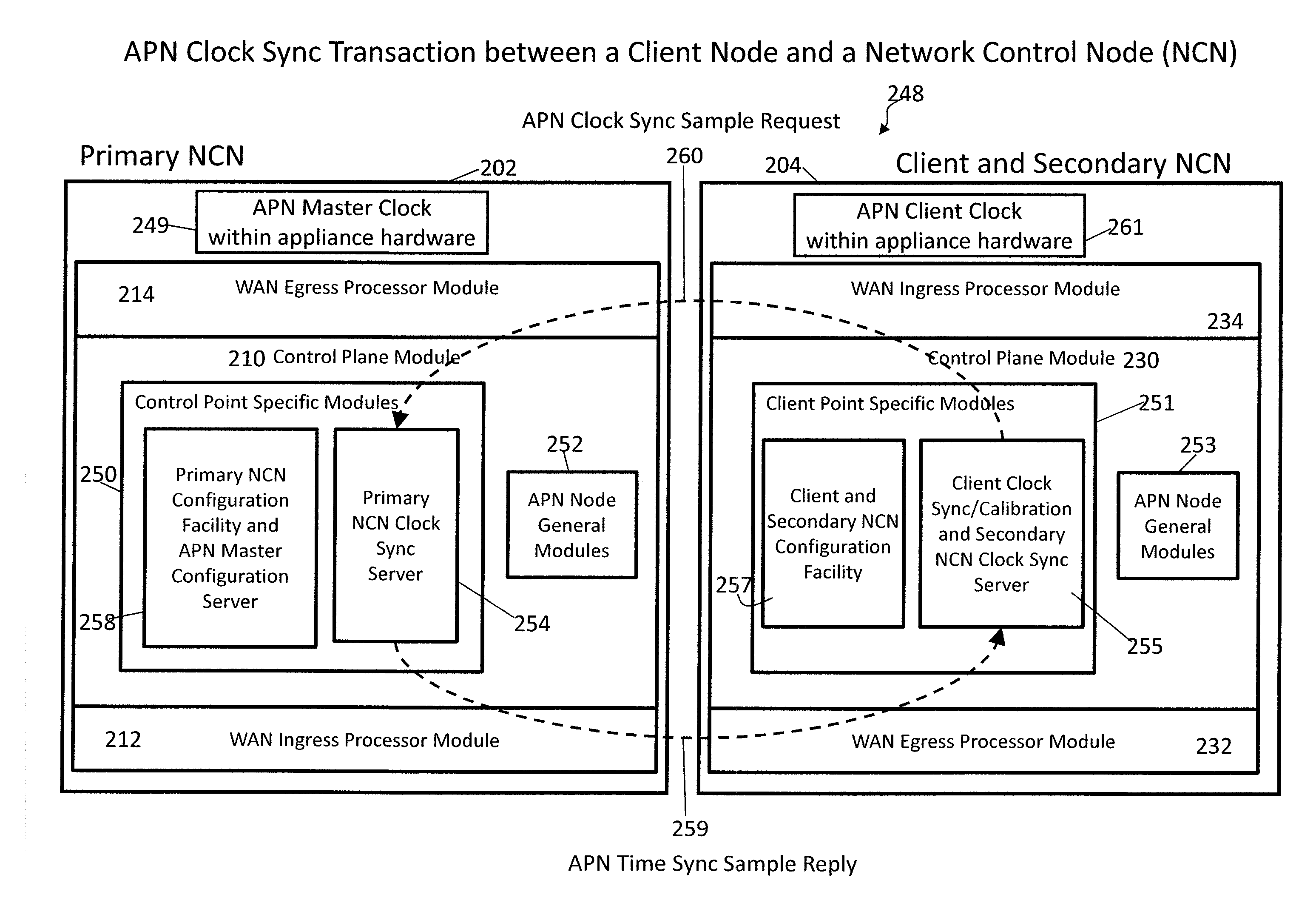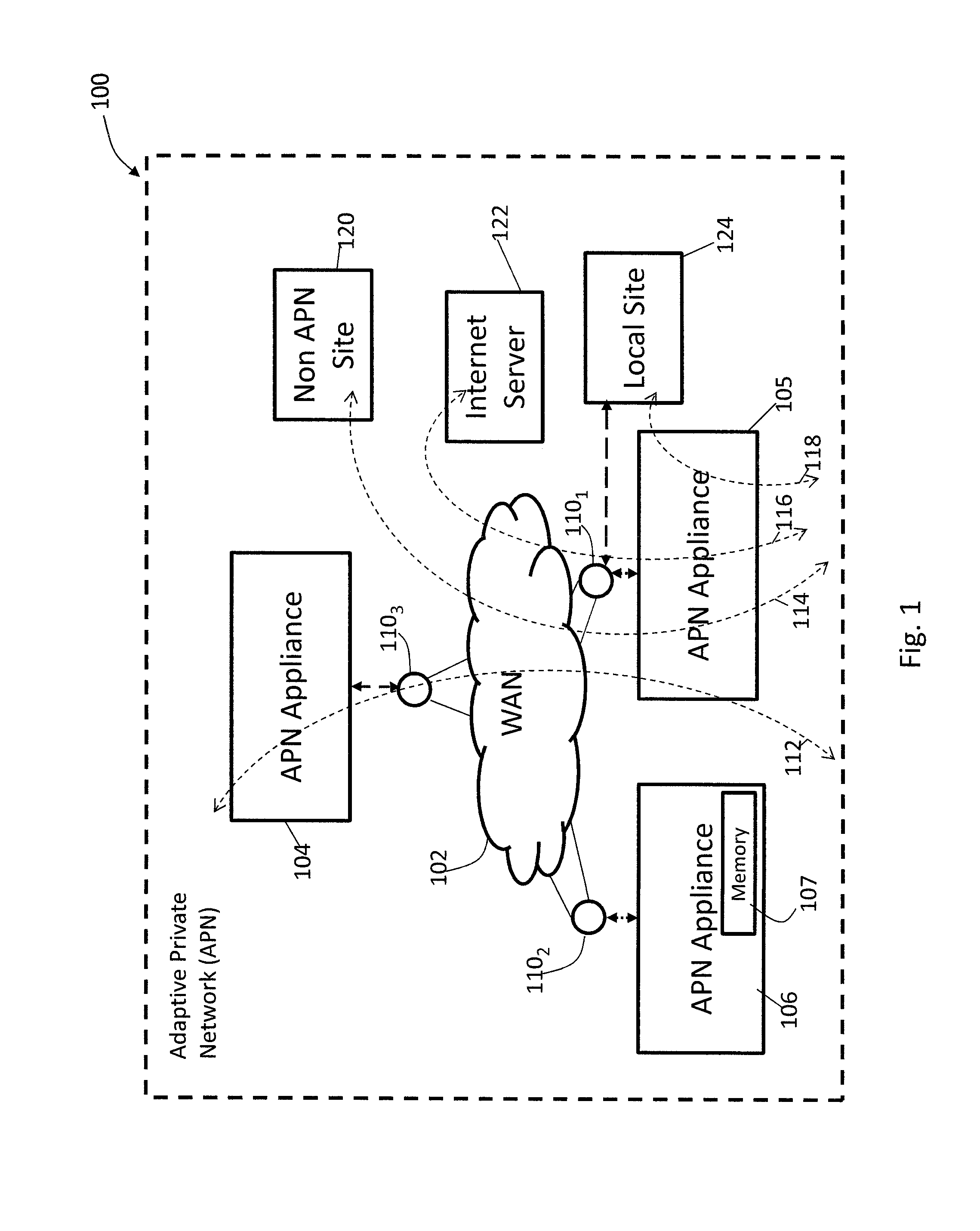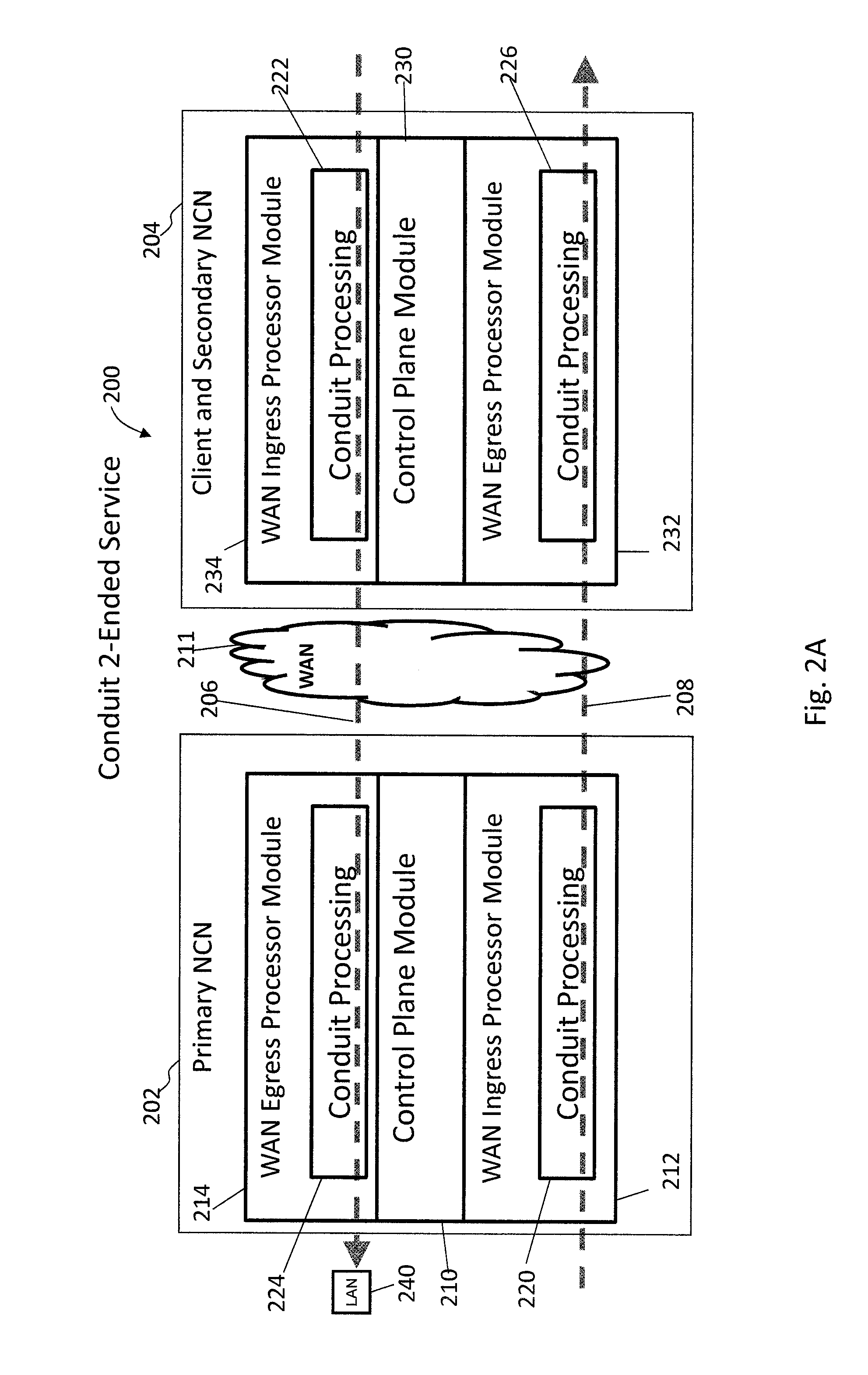Adaptive Private Network with Geographically Redundant Network Control Nodes
- Summary
- Abstract
- Description
- Claims
- Application Information
AI Technical Summary
Benefits of technology
Problems solved by technology
Method used
Image
Examples
Embodiment Construction
[0025]The present invention is directed towards providing a flow-based, reliable, high-bandwidth network comprised of multiple paths between sites.
[0026]FIG. 1 shows an example of an adaptive private network (APN) 100 in which the present invention may be suitably employed as described in further detail below, including the network components, flows, paths, and services. The APN 100 includes one or more wide area networks (WANs), such as WAN 102, APN appliances 104-106, WAN routers 1101-1103, and network application services as well as APN conduits between APN appliances, as described in more detail below.
[0027]An APN path is a logical connection established between two WAN links located at different geographic sites across a WAN.
[0028]An APN conduit is a virtual connection between two APN nodes, formed by aggregating one or more APN paths and their allocated WAN link resources.
[0029]An APN appliance (APNA) is a device that contains APN node functionality including all software modu...
PUM
 Login to View More
Login to View More Abstract
Description
Claims
Application Information
 Login to View More
Login to View More - R&D
- Intellectual Property
- Life Sciences
- Materials
- Tech Scout
- Unparalleled Data Quality
- Higher Quality Content
- 60% Fewer Hallucinations
Browse by: Latest US Patents, China's latest patents, Technical Efficacy Thesaurus, Application Domain, Technology Topic, Popular Technical Reports.
© 2025 PatSnap. All rights reserved.Legal|Privacy policy|Modern Slavery Act Transparency Statement|Sitemap|About US| Contact US: help@patsnap.com



